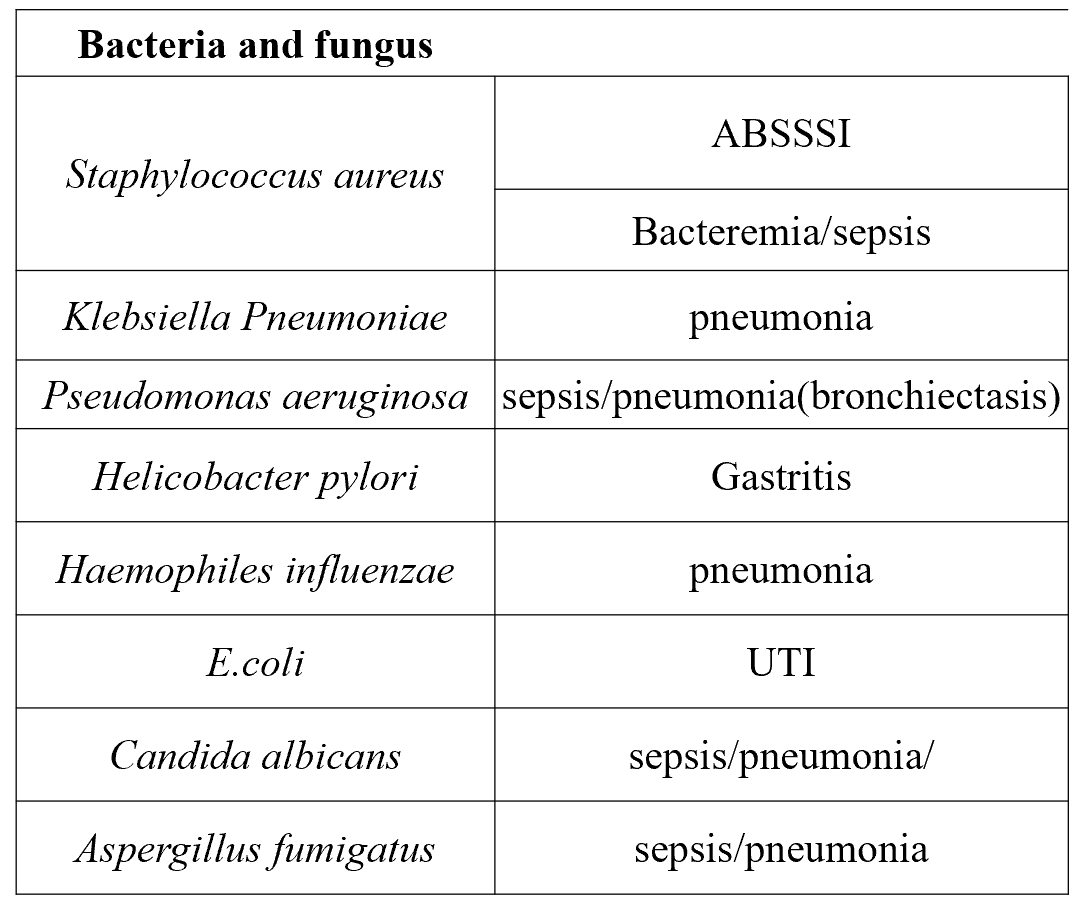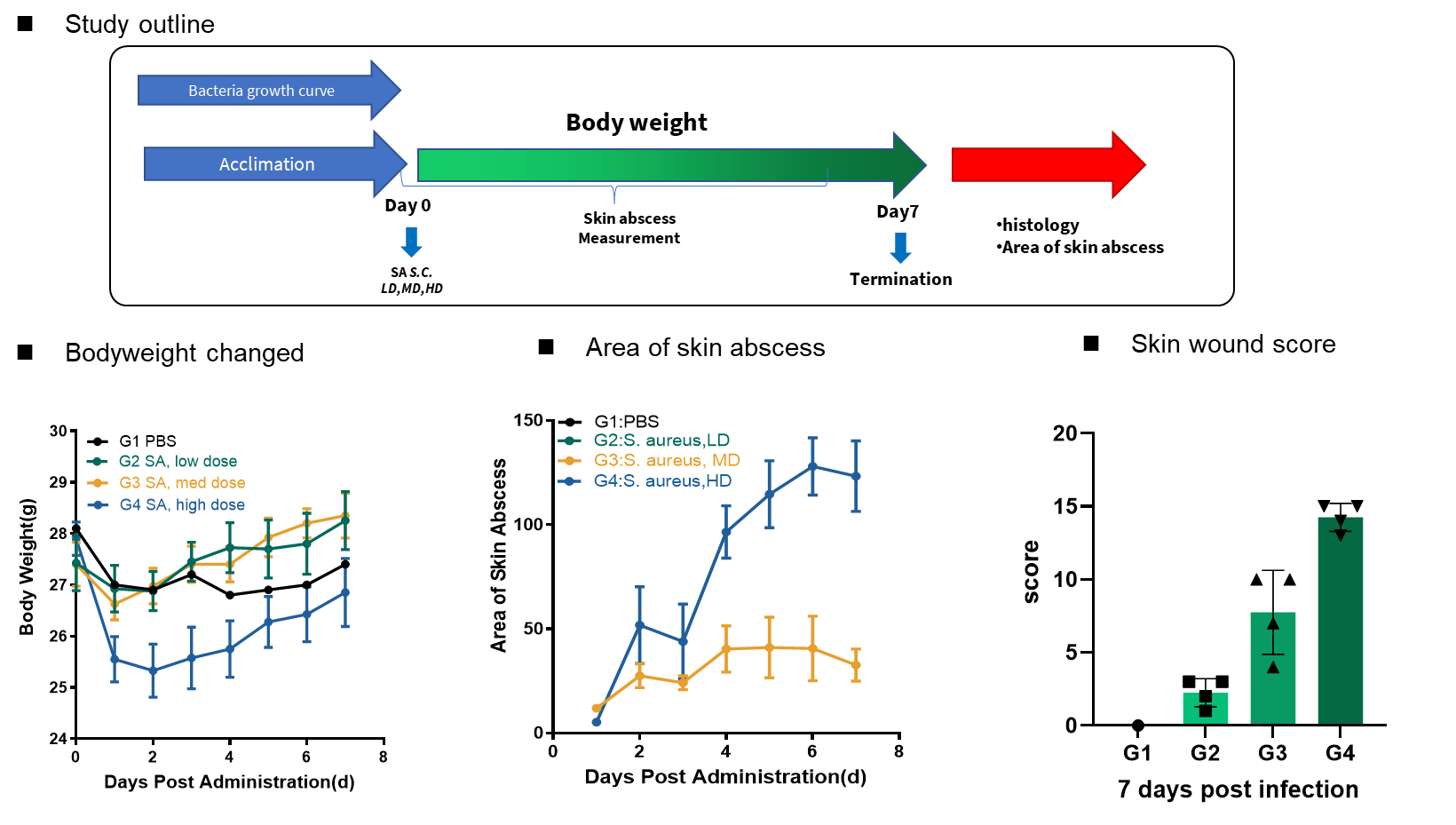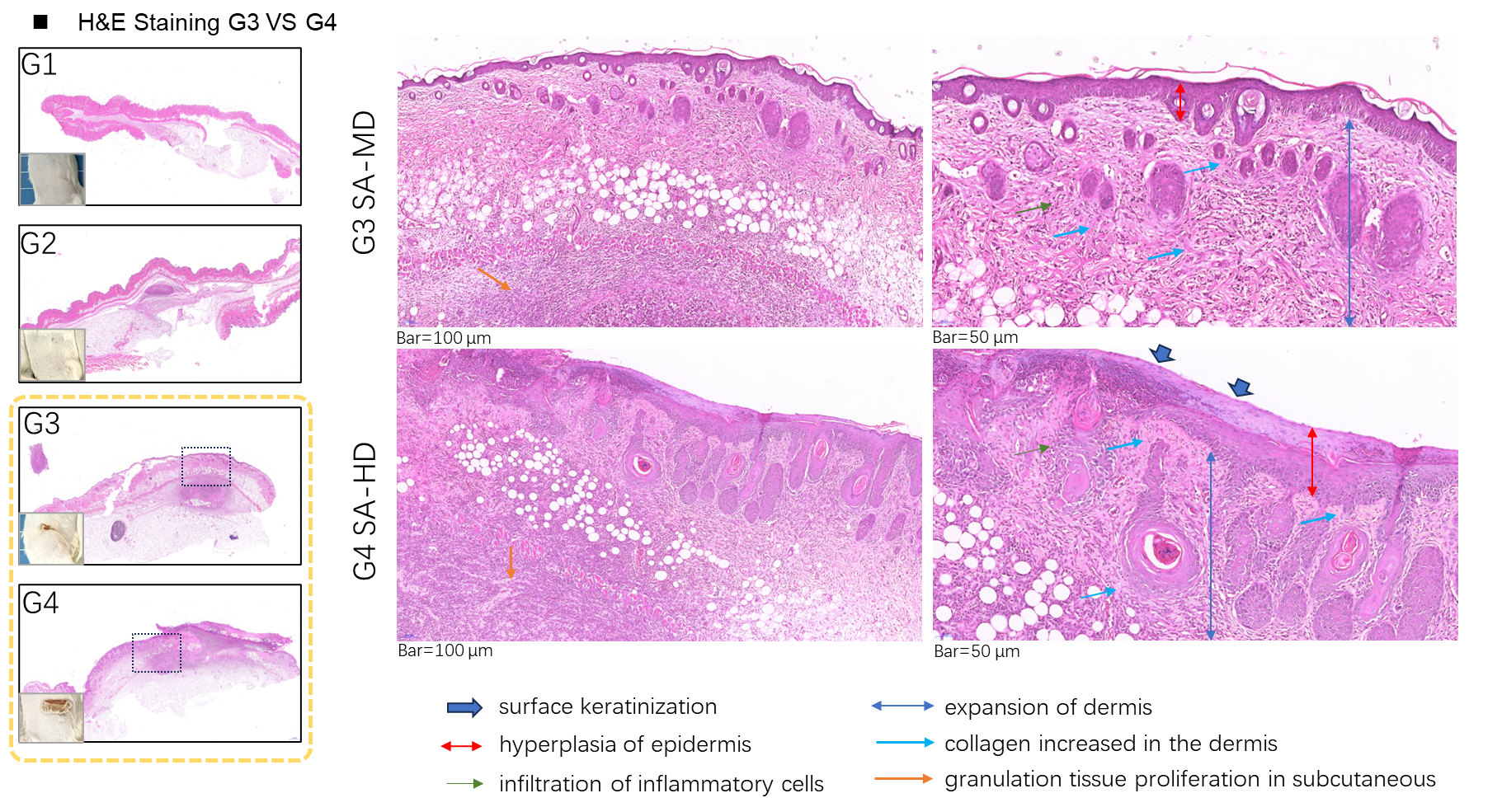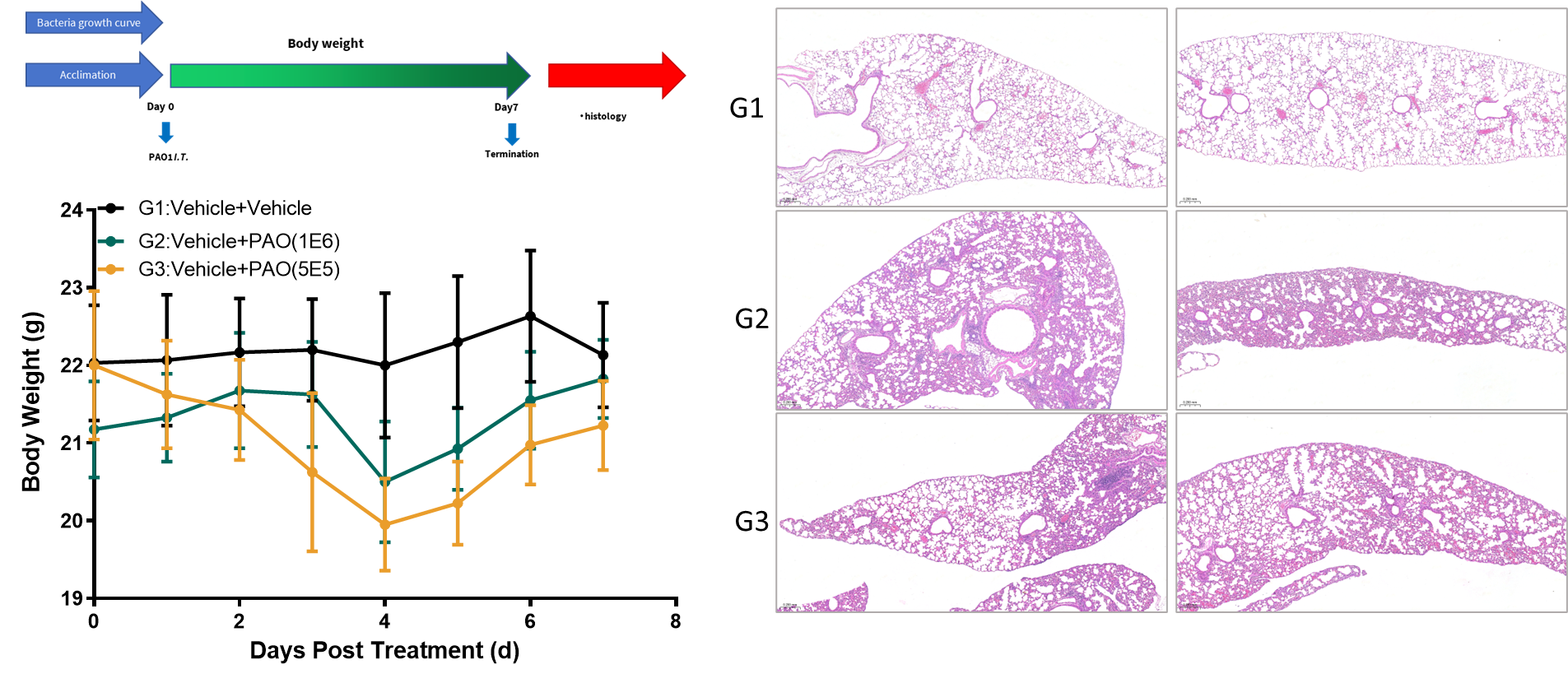Bacterial infection models involve infecting mice with pathogenic bacteria to study the host-pathogen interaction and evaluate the efficacy of antibacterial drugs. We can use different routes of infection, such as intravenous, intraperitoneal, or subcutaneous injection, to mimic different types of human infections. This provides a valuable platform for assessing the in vivo efficacy of drugs in treating bacterial infections and understanding the development of resistance.

List of bacterial and fungal infection models
Case 1: Staph. aureus-induced ABSSSI Model
Acute bacterial skin and skin structure infections (ABSSSI), formally referred to as complicated skin and soft tissue infections, include infections with resistance to previously effective antimicrobials.


ABSSSI model in Balb/c mice (partial data)
Case 2: Pseudomonas aeruginosa Infection Model
Pseudomonas aeruginosa causes community and nosocomial infectious pneumonia worldwide and is highly associated with diseases such as cystic fibrosis and bronchiectasis. In this model, we use immunocompetent mice for bacterial infection and evaluate their pathological changes at the endpoint.


